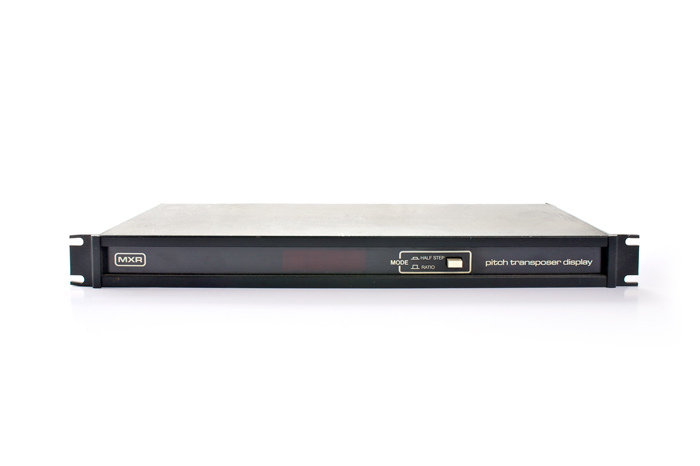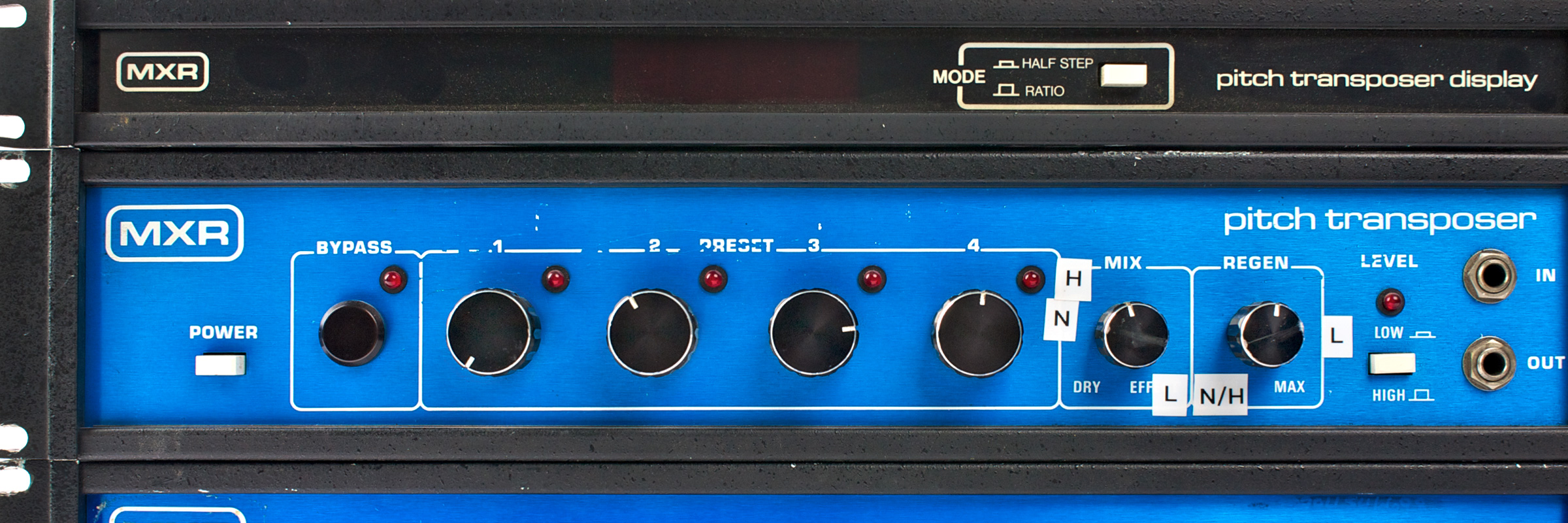Everyone knows MXR as one of the most iconic stompbox effect companies in history, but did you know that MXR also made a ton of rackmount effects that were used by some of rock’s biggest names? If not, have no fear—we’ve got the rundown for you below, along with a few sweet shots of the vintage rack units we have here at the shop.
In the late ’70s, MXR was one of the pioneers at the forefront of the digital wave. By the time it ventured into the realm of rackmount processors, MXR already owned a huge share of the stompbox effect market. The step into digital processing was a logical one—the company had already earned its reputation for delivering great sounding analog effects in cool little packages that fit comfortably at your feet.
But recording studios and audio engineers needed something more than a bright orange box. They required higher fidelity and a seriously high-tech look, and they weren’t as limited by pedalboard real estate as live musicians tended to be. Enter the MXR line of rack effects.

The line began with 2-space rack units such as the M-113 Digital Delay, M-124 Dual 15-Band Graphic EQ, M-126 Flanger/Doubler, and the M-129 Pitch Transposer. These were joined shortly by the more full-featured Delay System II and the M-180 Omni, the company’s first multi-effects processor. The effects boasted state-of-the-art sound in tour-approved enclosures and instantly attracted the attention of the world’s greatest musicians. The MXR Digital Delay and Delay System II in particular found favor with many top stars. David Gilmour stocked his touring racks with both MXR delays. Frank Zappa was also a fan of the “blue face” MXR Digital Delay. Brian May famously demoed his classic “Brighton Rock” echoes with two Delay System II units. The great Jaco Pastorius employed an MXR delay as an early looping device, using the sample and hold function to solo over.
Despite the fact that the MXR company fell on hard times in the mid-’80s, the rack effects endured, and found new life with each successive generation of players. The Flanger/Doubler became an integral part of one of the most transformative metal tones of the ’90s when Dimebag Darrell of Pantera made it a central component of his rig. Heavy players the world over flocked to the Flanger/Doubler for the massive tone thickening and widening that Dime made famous.
In addition to the 2U effects listed above, MXR also released single-space processors, including the Digital Time Delay. The only thing that tone freaks need to know about this unit is that Eric Johnson, arguably the biggest tone chaser of all time, keeps one on his pedalboard (yes, his pedalboard) to this day.

A huge part of the appeal of these MXR rack pieces is the fact that they were all very friendly to guitar signals. Where a lot of rack gear insisted on line-level, low-impedance signals, MXR effects were perfectly happy with the Hi-Z signals that guitars provided, resulting in a very plug-and-play experience. Rather than fuss and futz with other signal processors, guitarists could simply plug in, get great tone, and create with the MXR effects.
Whether players know it or not, MXR rack effects made a huge impact on tone in the ’80s, ’90s, and today. The sounds forged in those products live on in the MXR effects of today. Have you ever used an MXR rack effect?







